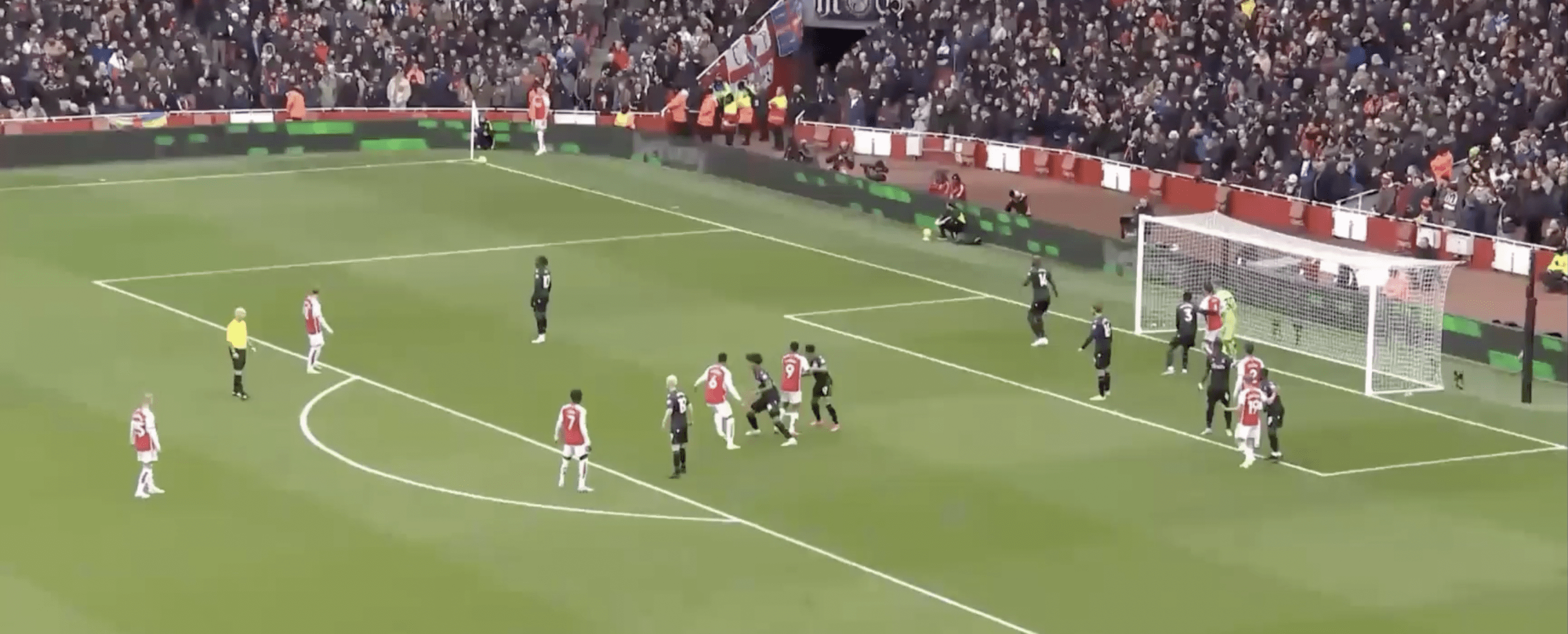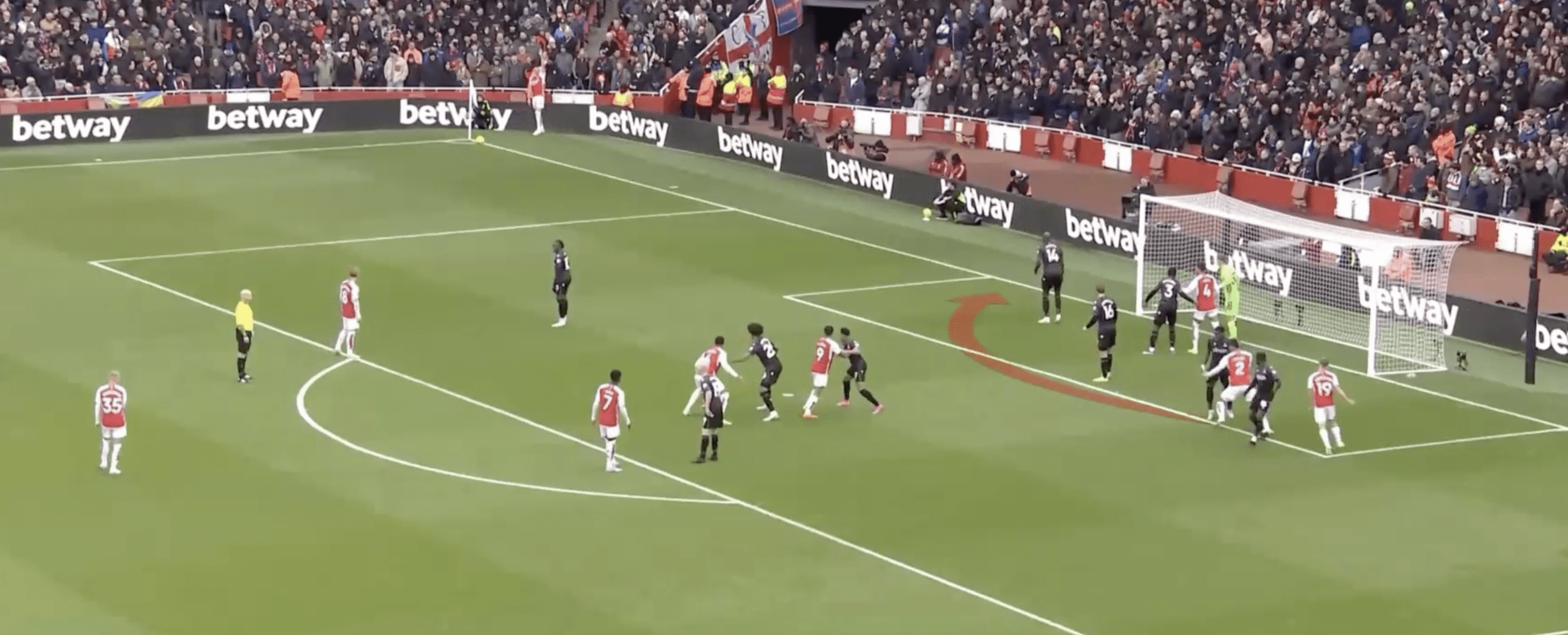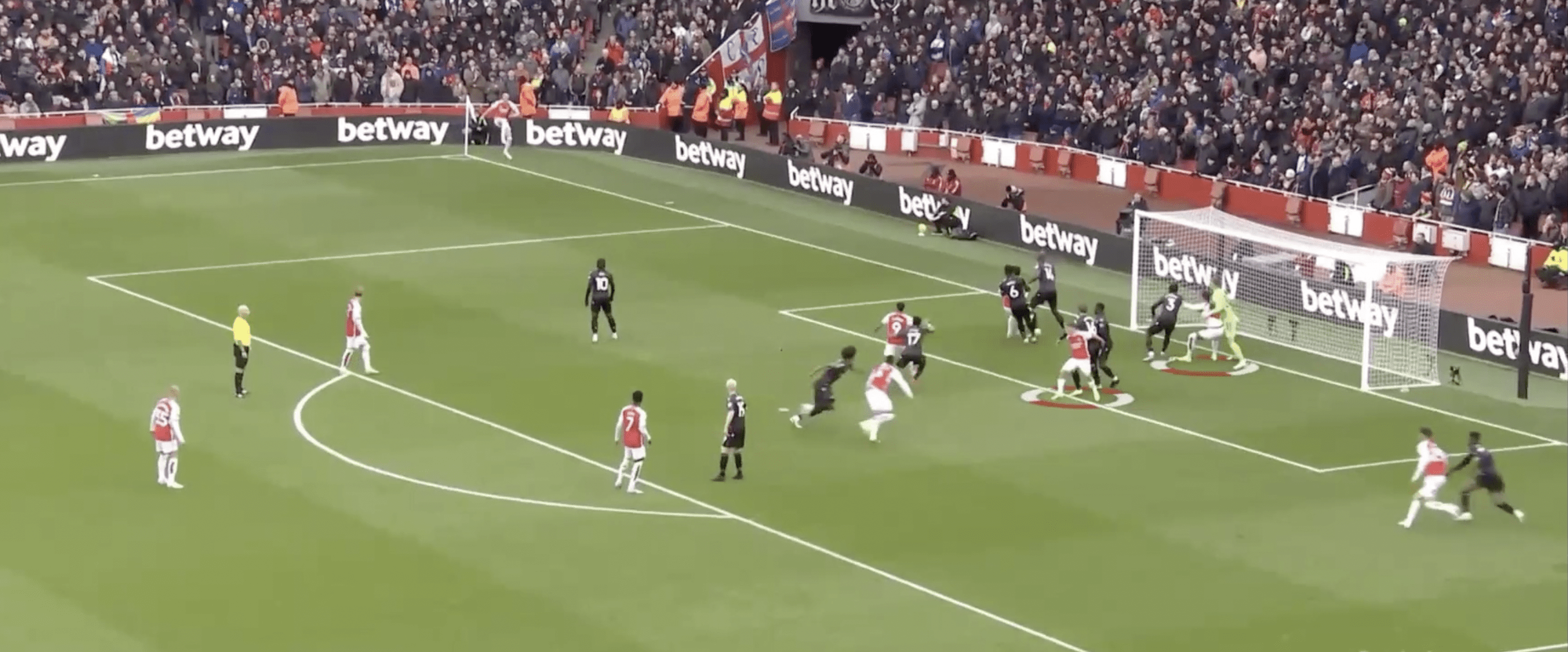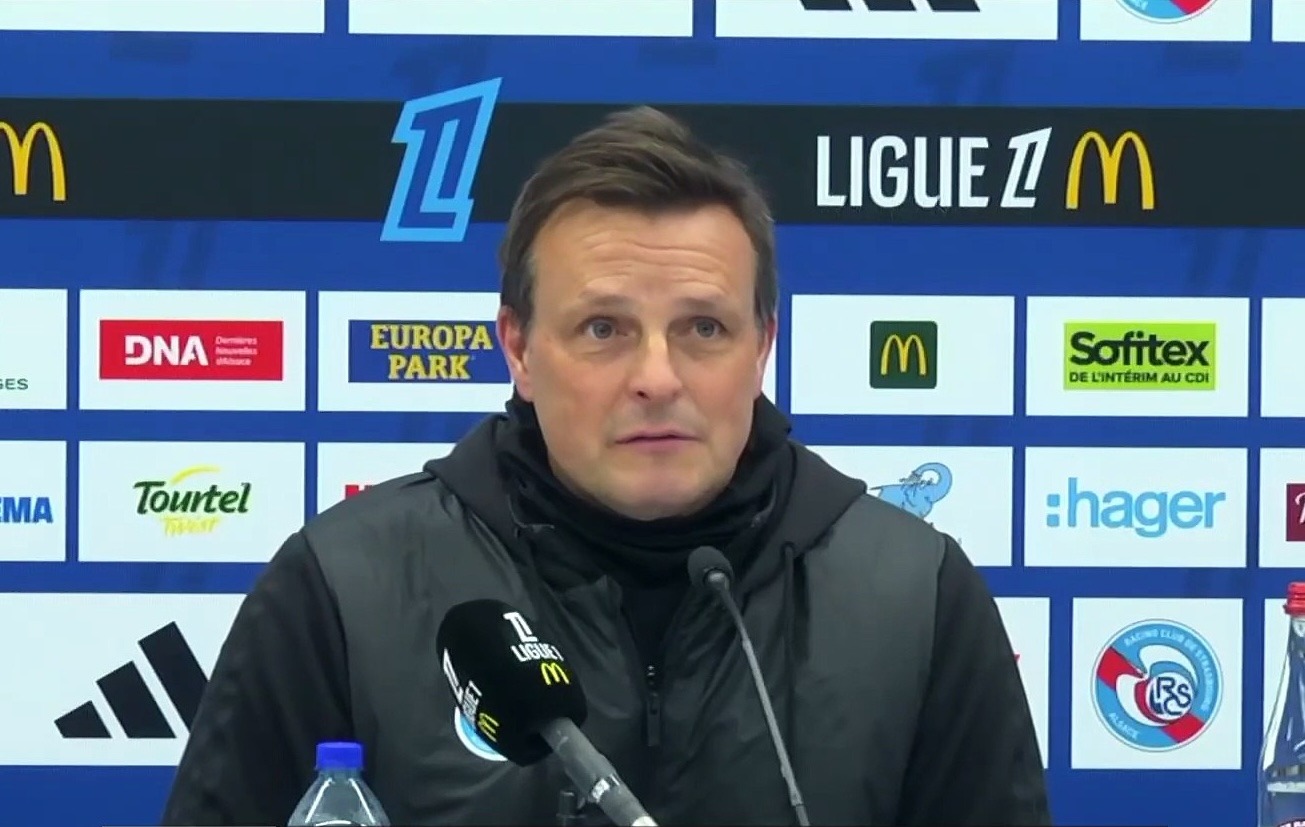Written by
Training Ground Guru
April 30, 2024
Arsenal’s two goals from corners against Tottenham on Sunday (April 28th 2024) saw them equal a Premier League record.
They have now scored 16 goals from corners this season, tying a record set by Tony Pulis’s West Brom in 2016/17. In his Set Piece Masterclass, former Newcastle United Analyst Billy Coulston outlined the four key components of an effective attacking set-piece routine – and Arsenal seem to have them all signed off.
First was numerical superiority. The Gunners pack the six-yard box more than any other Premier League team (per Opta, February 2024). For each corner they put an average of 3.31 players in the box. No other team averaged more than 2.93.
This combines with the second of Coulston’s Components: technical quality. Arsenal have had excellent delivery from corners and are very clear in what they want to do – namely, take an inswinger.
The Gunners almost always whip in fast inswingers, with outswingers comprising just 0.7% of their deliveries – the lowest in the Premier League.
Physical dominance is the third of Coulston’s Components. Arsenal have tall, powerful headers of the ball, such as centre-backs William Saliba and Gabriel, as well as Kai Havertz and Declan Rice, who were added to the squad in the summer.
The fourth Components is dark arts – and this is where Arsenal really excel. In fact it’s what this article is about.
Set Pieces are a fundamental part of the modern game. Billy Coulston helps improve your understanding, preparation & delivery of them.
The ‘dark arts’
In the Tottenham game, Ben White distracted and then blocked Tottenham keeper Guglielmo Vicario before Havertz headed in from a corner for Arsenal’s third goal.
In the Set Piece Masterclass, Coulston looked in-depth at what Arsenal do with their blocks – much of this orchestrated by Set Piece Coach Nicolas Jover – and used the example of their first goal against Crystal Palace in a 5-0 win in January.
Things had looked ok for Palace as Rice shaped up to take the corner from the left, as you can see from the still below.

“We can see Palace have quite a traditional English set-up, with two zonal markers, one at the front, one in the middle, and they seem to be man marking everywhere else,” Coulston explained. “Joachim Andersen is their main aerially strong defender and is in a position where he thinks he is free to attack the ball.”
Things soon changed though, as you can see below.

“The first run from Saliba (#2) across the front is a decoy run,” Coulston said. “He’s making a run across the front and Arsenal are going to deliver the ball to the back.”
As a result, Marc Guehi (6) followed Saliba out of the box, vacating space. Then Arsenal’s blockers came into action (below).

“Keep an eye on Leandro Trossard and Ben White, working blocks,” Coulston said. “Andersen is in the middle of the six-yard box and thinks he’s free to attack the ball, but Trossard makes a really good late block on him and White blocks the keeper.
“The keeper can’t come and get it and Andersen can’t come and head it. Now Andersen is starting to panic, because Gabriel has a free run against his man.”
Rice whips in an excellent inswinger and Gabriel advances from deep in the area to head into the net, without having really been challenged.
“It’s an unbelievable delivery from Rice and a really good example of how Arsenal have used the dark arts on set plays,” said Coulston.
Blocking might sound a simple process, but in reality it requires planning, practice and execution. First, timing.
“Arsenal work their blocks,” Coulston said. “So Trossard starts behind the player he’s going to block, meaning Andersen can’t see him until the last minute. Instead of standing on him, which would have meant he knew he was going to be blocked, there was that late movement from Trossard.
“Anderson can’t complain to the referee before the corner is taken, because he hasn’t got anyone on him at that point.”
It’s a continual game of cat and mouse.
Billy Coulston
Second, body shape.
“Look how low Trossard gets in to block him – he’s almost bent down leaning into him,” Coulston said. “He’s not the biggest and Andersen is a lot bigger, but by getting lower and giving himself a good base he’s able to block him off. “
So what can the defending team do to counter Arsenal’s blocking?
“A great one is making the referees aware of it,” Coulston said. “I think it’s really hard for defenders to deal with blocks and I’m surprised we don’t see more fouls with the use of VAR, but at the minute the referees tend to let them go.”
There are things that defending teams can do to counter this, although it’s difficult.
“At Newcastle United, we used to traditional man mark and you would follow your man everywhere,” Coulston said. “I can remember one game when we made a slight adjustment though, as we knew the opposition were going to work some good blocks.
“We still man marked, but our starting positions were in a straight line of four or five making it harder for them to block us off.”
You can also block the blocker.
“I saw it the other day – the attacking team had a blocker trying to block the blocker,” Coulston said. “Then you get into, ‘Well, if you’re going to block our blocker, we have a spare man somewhere else.’ It’s a continual game of cat and mouse.”
Follow Us
For latest updates, follow us on X at @ground_guru



